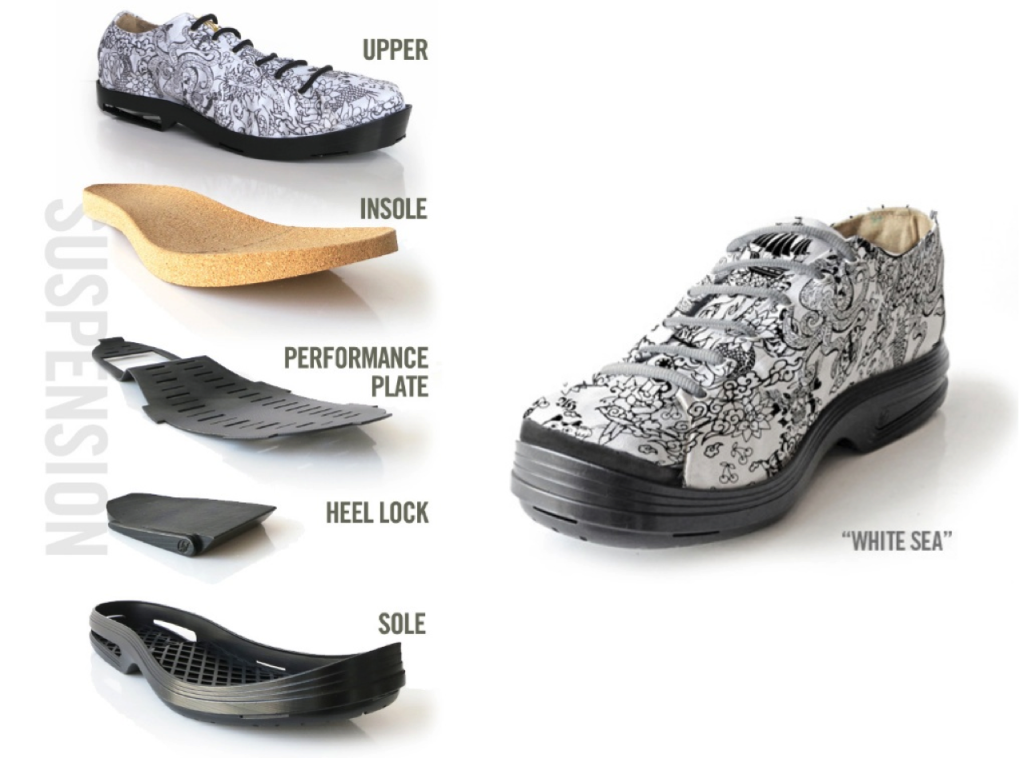As interesting as 3D printed footwear is from a design perspective, the purpose of the process of 3D printing shoes may seem a bit elusive. The main advantage that 3D printing brings to the table is the ability to tailor shoes to fit the feet of individual wearers. This in itself is pretty groundbreaking, but lacks the oomph to really drive shoe production in that direction. According to a blog called Transition Consciousness, a new 3D printed shoe brand is taking a look at footwear manufacturing from a bigger picture perspective and plans to turn the whole thing on its head.
Lyf Shoes don’t simply attempt to make the shoe wearer more comfortable by embracing 3D printing, but the shoe makers and the environment, as well. The current shoe manufacturing process is unsustainable, dangerous to those assembling the shoes, and results in CO2 emissions and waste through the shipping and processing of heaps of shoes that are thrown away at the end of their life. And, because most shoes are made from multiple materials, they are difficult to recycle. Lyf is taking a modular approach to shoe making that combines recyclable materials, custom fabrics, 3D printing, and, surprisingly enough, Arduino microcontrollers.
Lyf’s footwear is made from materials that can be easily recycled, such as the cork that makes up the shoes’ insoles. When wearers have worn out a pair of their shoes, they can take their old pair in and get a 15% discount on their next pair. The shoes themselves are fabricated within a given retail shop and, when returned, the shoes are disassembled with the constituent components sent back to their manufacturers. The Lyf website explains:
Incenting consumers with a buy-back program, Lyf pioneers “Symmetrical Manufacturing” whereby each assembly facility also disassembles product, sending components back to OEM manufacturers, creating the industry’s first “closed loop” shoe. LYF also utilizes a clever digital capture device that tracks biomechanics and builds user profiles. This allows Lyf to identify user needs, refine their product over time, and “close the loop” with consumer retention.
The soles of the shoes are 3D printed within a given retail location, giving customers the ability to shape the footwear to their own feet. With the use of digitally printed fabric, the type used by Spoonflower, wearers can create custom fabric tops for an added touch of individuality. Finally, Lyf has added a technological twist that gives wearers greater comfort and fit with every new pair. The company plans to embed an Arduino powered sensor to track the foot pressure and general walking activity of the wearer, in order to inform the design of the next pair of shoes.
I wonder about the environmental impact of shipping materials to and from the manufacturers of the constituent materials of each shoe, but the company claims that, using a sustainability tool called the LCA calculator, their model offers a “49% reduction in Carbon Footprint compared to standard imported footwear.”
Lyf is currently going on the road, giving presentations about their product and looking for 25 men and 25 women to beta test their first batch of shoes. To learn more or to try to become a beta tester, visit the Lyf website here.





